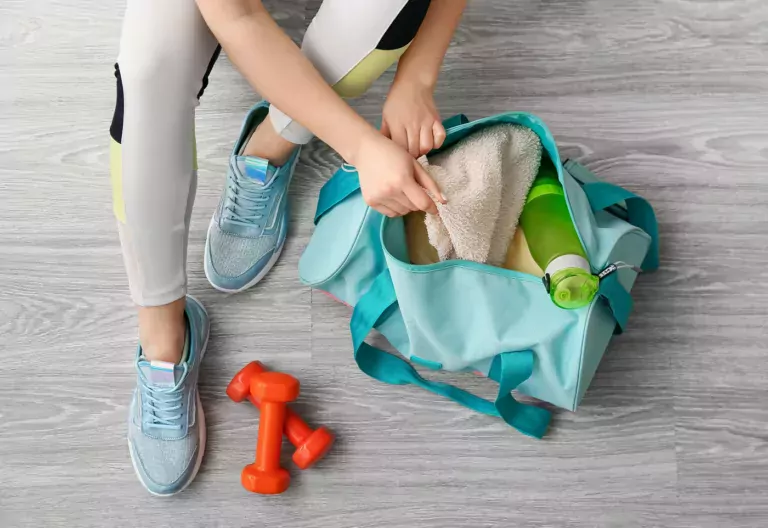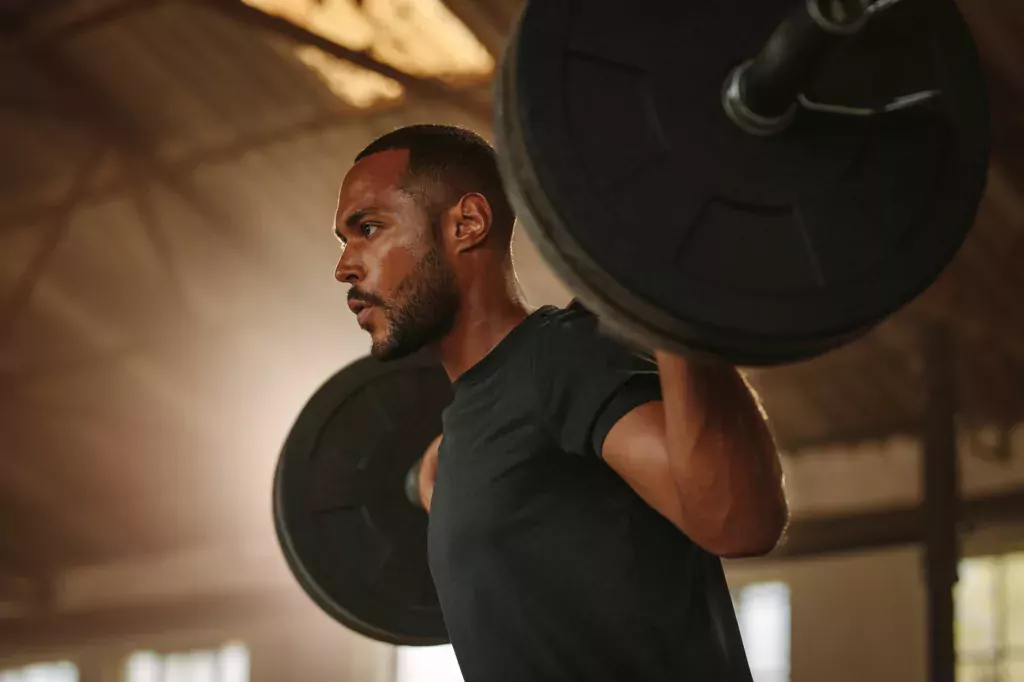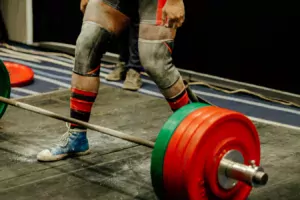Workout Gear and Supplies
A few weeks ago, I spoke about training shoes. What kind of shoes should you be wearing for each training purpose? I had a couple of emails and notes though about how expensive that would be. I don’t disagree, but if you spend any amount of time doom scrolling through social media comments, you’ll find this kind of thing.
I’ll say it again: Get-Fit Guy is a 12-minute-long, general fitness podcast. I can’t possibly make a podcast that takes into account the personal financial situations, the foot types, the walking or running style, and preferences of thousands of listeners. I can’t possibly sit and imagine a scenario where I’m not being inclusive enough because I didn’t consider anyone out there who went on an Arctic expedition, only to fall through the ice while running away from a savage polar bear, only to have their toes fall off from frostbite and now can’t wear running shoes. You know, I’d really love to sit from now until infinity writing out the perfect podcast script for every special snowflake, but I can’t. So let’s bear that in mind throughout our lives this week! If you don’t like meat, don’t troll a steak restaurant, and if you think the earth is flat, don’t send hate mail to NASA. Let’s all just get along!
So, after covering training shoes earlier this month on Get-Fit Guy, I thought maybe I could let everyone into ‘what’s in Kevin’s training bag’ and why. How fun.
Knowing what you need in your gym bag
So, the first thing is that I take different things to the gym based on what I am doing there and might do different things on my way there also. So let’s dig in.
Creatine
Today was leg day for me: I always train legs on a Monday. I push and pull (upper) on a Wednesday and I deadlift on a Friday. So bearing that in mind, the first thing I did this morning as preparation for training today was to take 5g of creatine. I do take creatine most days; I do cycle it. That means that I take it for 8 weeks and then stop taking it for 2 weeks. I’ve heard people (incorrectly) saying you need to cycle off because it damages your kidneys. This is false. High protein also doesn’t damage your kidneys either, just FYI. You reach a point of diminishing returns, and cycling off lets you reset and reap the benefits when you start again. Why creatine? Well, very oversimplified, it helps the production of ATP, which is a fuel your muscles use up when they contract. So, more ATP, more reps. This helps you get bigger and stronger. There are also cognitive benefits, and at this point, it’s perhaps the most studied supplement out there, with literally thousands of peer-reviewed, statistically powerful studies done on it. Put simply: it works and has almost no negative side effects, unless you think getting absolutely hench is a negative side effect.
My colleague Monica Reinagel of the Nutrition Diva podcast has shared her expertise on creatine, as well. Check out this episode of her show where she went over research that suggests creatine plays a role in preserving cognitive function as well! Listen in this player below as you read on.
What workout gear do you need?
Well, it depends. So, squat day for me means shorts. Not only that, but short shorts! The reason for this is that I prefer to squat to depth. It can often be the case that longer shorts or jogging pants can trick your mind regarding depth because they tighten around your thighs as you squat. This gives a form of tactile feedback or kinesthetic feedback to your brain, making you think you are at the bottom of the squat when you are not. Therefore, it’s short shorts for me!
Keeping on the theme of clothing, I always make sure that I am wearing a plain cotton t-shirt for leg day. The reason for this is that some of the more sporty moisture-wicking materials are a little slippery or shiny in nature and the barbell may start to sneak down your back a little. If you have ever watched powerlifters squat, it’s common to see them chalk their upper back to stop any bar roll, and you can even get shirts with a sticky area there to perform the same task. For us ‘general population’ gym users, just a plain cotton tee will be sufficient.
Short shorts, long shorts, cotton T or tank top – whatever you wear, don’t skip leg day!
Shoes to wear on leg day
Ah, training shoes. As you may have imagined, if you listened to my episode on shoes, I wear weightlifting shoes on leg day. There are many brands out there, and you need to find one that works for you. As a lifelong martial artist, I have a different foot perhaps from someone who has worn shoes all their days. A wide forefoot and high arches, so I have a brand that has more arch support to stop my ankles rolling inwards. As someone emailed after that episode: why not barefoot? Well, because oftentimes lifting platforms are made of varnished wood and feet can get a little sweaty. I have personally seen someone slip on their own sweaty feet and get folded in half by the bar. So, it’s not a recommendation I would make, generally speaking.
The next thing is to note that if you wear weightlifting shoes, wear them for ALL your sets. When you put them on, you will move differently because you have an elevated heel. You don’t want to be in running shoes, functional fitness shoes, or barefoot if you like to live dangerously and do all your warm-ups only to TOTALLY CHANGE literally everything about your squat when it gets heavy and you decide to throw your shoes on. No. You have to move the same through all sets, including the warm-up.
Knee sleeves
Also in my bag for leg day are knee sleeves. I have 7mm knee sleeves; most brands seem to have 5mm ones. Now, I don’t believe 7mm of neoprene will stop your knees exploding under 500lbs; that’s why in competitions, weightlifters and powerlifters both wear knee wraps. But, they do keep your knees warm, and that helps with movement and mobility and hey, I’m not not going to sit and tell you that placebo isn’t a thing because it is. They help you ‘feel’ more secure, irrespective of that being the case or not. Knee wraps are much better, but nobody has time to sit and wrap their knees for a set of squats, unwrap them, roll the wraps up and then wrap them again for the next set.
Should you wear a belt for leg day?
Next up is a belt. I do wear a belt to squat because it works. A belt increases intra-abdominal pressure, which keeps your torso super tight and rigid during the movement. A deformable lever is a poor transmitter of force, so if your torso is moving about and rounding, then it’s not as effective at transmitting force to the barbell. Simply put: you can lift more with a belt on. I also want to be clear that it’s a 4-inch belt with no front taper. This is because those tapered belts were designed by people who don’t seem to understand the science of a belt. You want a larger surface area to push your abdomen against. I also don’t wear a velcro belt because over time, velcro wears out and I have seen people at the bottom of a squat, the abdominal pressure went up, and the velcro just exploded apart. Don’t do this. 4-inch, single prong belt.
Functional fitness shoes
I do have a pair of ‘functional fitness’ shoes with me because after training legs, I always get on the upright bike for 20 minutes for some zone 2 work, but also because it helps recovery. When you train, you damage tissue and blood flow is how we clear waste, reduce inflammation and deliver nutrients for healing to the area. So, for me, it’s always cycling after squats. I generally use the ski erg machine for days where I press overhead to get blood flow into the triceps and on deadlift day, I row!
What else do you need at the gym?
Apart from that, the only things in my bag are AirPods (I don’t listen to music when I train, but I switch the noise canceling on so I don’t get distracted by other people) and a water bottle with water and a sachet of Pedialyte to replace any electrolytes. And that’s it! What’s in your training bag that you couldn’t live without? Email me at getfitguy@quickanddirtytips.comcreate new email and let me know or ask a question, and it could be featured on the show. Don’t forget to share Get-Fit Guy with your friends!
Disclaimer
All content here is for informational purposes only. This content does not replace the professional judgment of your own health provider. Please consult a licensed health professional for all individual questions and issues.






